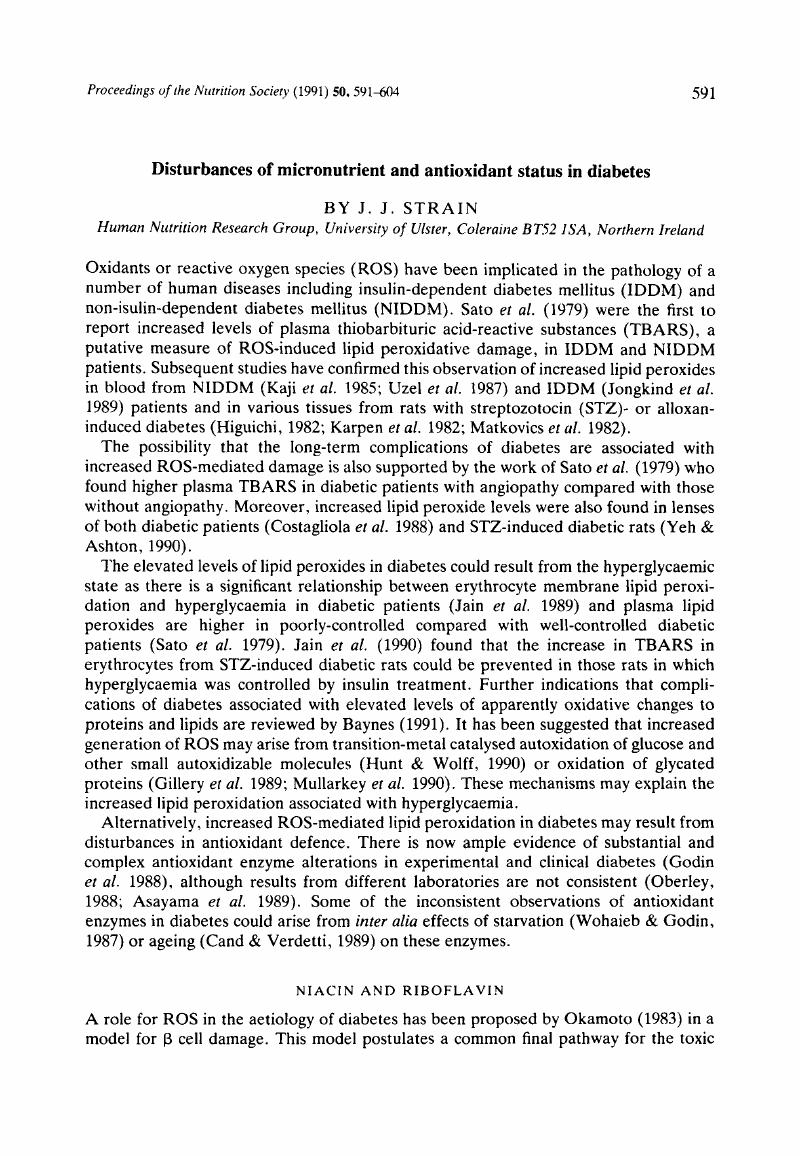Crossref Citations
This article has been cited by the following publications. This list is generated based on data provided by Crossref.
Thompson, R. L.
Margetts, B. M.
Wood, D. A.
and
Jackson, A. A.
1992.
Cigarette Smoking and Food and Nutrient Intakes in Relation to Coronary Heart Disease.
Nutrition Research Reviews,
Vol. 5,
Issue. 1,
p.
131.
1993.
Abstracts of Communications.
Proceedings of the Nutrition Society,
Vol. 52,
Issue. 1,
p.
1A.
1994.
Abstracts of Communications.
Proceedings of the Nutrition Society,
Vol. 53,
Issue. 3,
p.
158A.
Nève, Jean
and
Richard, Marie-Jeanne
1994.
Trace Elements and Free Radicals in Oxidative Diseases.
p.
284.
Felton, Gary W.
1995.
Oxidative Stress and Antioxidant Defenses in Biology.
p.
356.
Schmidt, Lois E.
1995.
Nutrition Update.
The Diabetes Educator,
Vol. 21,
Issue. 1,
p.
21.
Krachler, M.
Lindschinger, M.
Eber, B.
Watzinger, N.
and
Wallner, S.
1997.
Trace elements in coronary heart disease.
Biological Trace Element Research,
Vol. 60,
Issue. 3,
p.
175.
Mooradian, Arshag D
1997.
Central nervous system complications of diabetes mellitus — a perspective from the blood–brain barrier.
Brain Research Reviews,
Vol. 23,
Issue. 3,
p.
210.
van Dam, P.Sytze
van Asbeck, B.Sweder
Bravenboer, Bert
van Oirschot, Johannes F.L.M.
Gispen, Willem Hendrik
and
Marx, Joannes J.M.
1998.
Nerve Function and Oxidative Stress in Diabetic and Vitamin E-Deficient Ratsfn1fn1Grant support: Diabetes Fonds Nederland..
Free Radical Biology and Medicine,
Vol. 24,
Issue. 1,
p.
18.
Feillet-Coudray, C
Rock, E
Coudray, C
Grzelkowska, K
Azais-Braesco, V
Dardevet, D
and
Mazur, A
1999.
Lipid peroxidation and antioxidant status in experimental diabetes.
Clinica Chimica Acta,
Vol. 284,
Issue. 1,
p.
31.
Knekt, P.
Reunanen, A.
Marniemi, J.
Leino, A.
and
Aromaa, A.
1999.
Low vitamin E status is a potential risk factor for insulin‐dependent diabetes mellitus.
Journal of Internal Medicine,
Vol. 245,
Issue. 1,
p.
99.
Pedrosa, Lucia de Fátima Campos
and
Cozzolino, Sílvia Maria Franciscato
1999.
Alterações metabólicas e funcionais do cobre em diabetes mellitus.
Revista de Nutrição,
Vol. 12,
Issue. 3,
p.
213.
Szaleczky, Erika
Prechl, József
Fehér, János
and
Somogyi, Anikó
1999.
Alterations in enzymatic antioxidant defence in diabetes mellitus − a rational approach.
Postgraduate Medical Journal,
Vol. 75,
Issue. 879,
p.
13.
Spyrou, N. M.
1999.
Neutron activation analysis challenges: Problems and applications in biomedical and other areas.
Journal of Radioanalytical and Nuclear Chemistry,
Vol. 239,
Issue. 1,
p.
59.
Benzie, Iris FF
Chung, Wai-yuen
and
Tomlinson, Brian
1999.
Simultaneous Measurement of Allantoin and Urate in Plasma: Analytical Evaluation and Potential Clinical Application in Oxidant:Antioxidant Balance Studies.
Clinical Chemistry,
Vol. 45,
Issue. 6,
p.
901.
Mercuri, Franceschina
Quagliaro, Lisa
and
Ceriello, Antonio
2000.
Review Paper: Oxidative Stress Evaluation in Diabetes.
Diabetes Technology & Therapeutics,
Vol. 2,
Issue. 4,
p.
589.
DiSilvestro, Robert A.
2000.
Zinc in Relation to Diabetes and Oxidative Disease.
The Journal of Nutrition,
Vol. 130,
Issue. 5,
p.
1509S.
Devaraj, Srideri
and
Jialal, Ishwarlal
2001.
Primary and Secondary Preventive Nutrition.
p.
117.
VanderJagt, Dorothy J
Harrison, Jason M
Ratliff, D.Michelle
Hunsaker, Lucy A
and
Vander Jagt, David L
2001.
Oxidative stress indices in IDDM subjects with and without long-term diabetic complications.
Clinical Biochemistry,
Vol. 34,
Issue. 4,
p.
265.
Anderson, Richard A.
Roussel, Anne-Marie
Zouari, Nouri
Mahjoub, Sylvia
Matheau, Jean-Marc
and
Kerkeni, Abdelhamid
2001.
Potential Antioxidant Effects of Zinc and Chromium Supplementation in People with Type 2 Diabetes Mellitus.
Journal of the American College of Nutrition,
Vol. 20,
Issue. 3,
p.
212.



